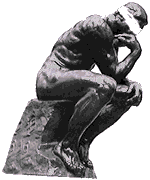| |
Green Box
Even though the green box (and possibly an adequate transcription)
is indispensable and actual part of the work as a whole, each snippet of
text, each little line and sketch, practically works only through the (retinal)
appearance of the glass.
This can simply be tested by just trying to imagine how the unfinished
parts of the glass would look. De documents are (partly) present in the
Green Box, sketches included, while - what can be considered - the "stile"
in which this would happen is available for a large part in the finished
components. The conclusion will almost certainly be that this isn't possible
- how important the aesthetics of the retinal aspect of the work apparently
is!
Not only in the part of glass however, but also in the documents of
the Green Box, appearance plays its role. Why would Duchamp have chosen
the facsimile procedure he meticulously carried out in order to multiply
the original container of his notes and sketches, i.e. the original Green
Box and it's multiplication in 300 copies, if he could sufficiently have
done with printing just the text? - or maybe a transcription such as Richard
Hamilton made of the Green Box?
"The form he chose then was meticulously and enigmatically Duchampian--a
limited edition of ninety-four notes, drawings, and photographs, printed
in facsimile, using the same papers and the same inks or pencil leads,
torn or snipped in precisely the same way as the originals, with the same
crossings-out and corrections and abbreviations and unfinished thoughts,
contained willy-nilly in a rectangular green box covered in green suede
with the title, La Mariee mise a nu par ses celibataires, meme (the same
as the Glass), picked out in white dots on the front, like a sign on a
theater marquee." (Calvin Tomkins)
It's almost beyond doubt that this decision is one of the visual artist,
not the free-time theorist or pseudo scientist. The editions acquired a
sense of originality of works of art, but it's doubtful if the decision
for the facsimile reproduction had been suggested by such sentiments. (and
possibly for profit, because as works of art the editions would be worth
more money)
Most probable reason for the facsimile procedure to multiply the Green
Box is that the contents has to be viewed in its original visual appearance
- torn edges included.
Several years after my first encounter with "The Bride Stripped Bare"
I had the change to see the Green Box. (only part of it, as it's exhibition
is mostly bound to a limited access (just a few documents at a time) through
the "glass window" of a showcase)
I was struck dumb: it is important, even not being able to (sufficiently)
read the French notes, it had an equally powerful appeal to me as the part
of glass.
By that time a sense of fetishism could have been part of this sensation,
because after some time admiration unavoidably wakes up the collector in
everybody, but that goes for the aimed proprietor of the editions of the
Green Box by Duchamp as well.
An other publication of similar material, the book "Etant Donnes", issued
by the Philadelphia Museum of Art, US - 1987, is an exact photographic
copy of the ring binder Duchamp kept to collect the notes, sketches and
photographs for a "manual of instructions", with "15 operations" to (dis-
re-) assemble the installation. Here too, the enigmatically Duchampian
characteristics are present, even though it's a photographic copy of a
manual.
I read several transcripts of the Green Box, even managed to acquire
an original copy of Richard Hamilton's book from 1960, which is the best
of all transcripts in my view.
The book was titled: "The bride stripped bare by her bachelors, even -
a typographic version by Richard Hamilton of Marcel Duchamp's Green Box,
translated by George Heard Hamilton" - (George
Wittenborn Inc.) The transcription has been approved by Marcel
Duchamp: "This version of the Green Box is as accurate a translation of
the meaning and form of the original notes as supervision by the author
can make it." (Marcel Duchamp, 1960)
But, each and every time I browse this publication I miss something.
How would it look?
What French word did he use here? etc. - it's a relation rather than
an observation.
No matter how precise (and attractive in its own way) and "approved"
the transcript of Hamilton may be, I can't help it to experience a sense
of surrogate. It's like copulation with the restriction of a rubber preventive:
not the real thing.
While a good transcript is indispensable to gain better access to the
semantics and clues (as far as present) it still lacks the same appeal
the Time/Life publication, by Calvin Tomkins, had on me back in those days.
Although it was (only) photography it worked right trough it, just as is
the case with the the publication "Etant Donnes", issued by the Philadelphia
Museum of Art. |

